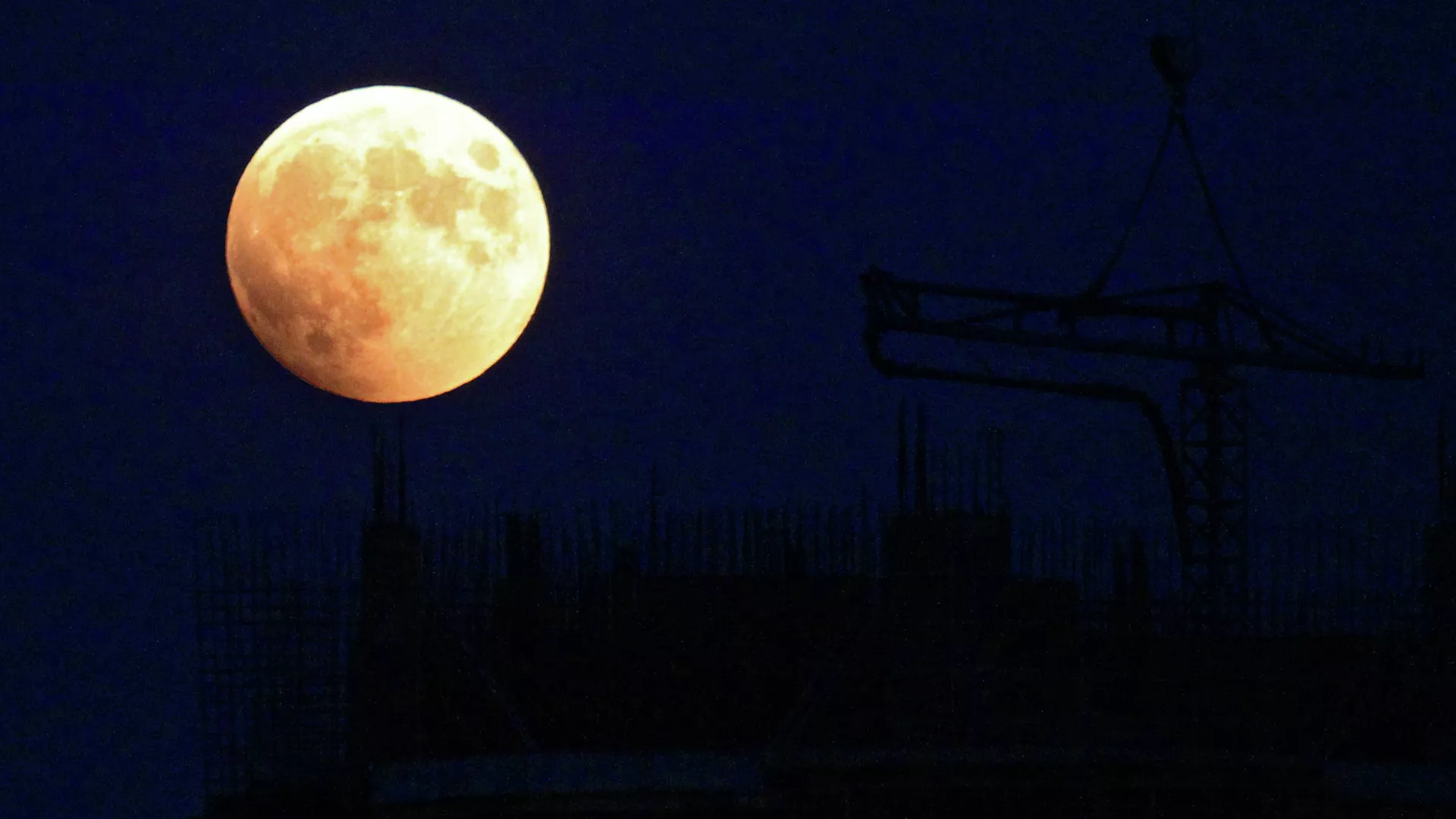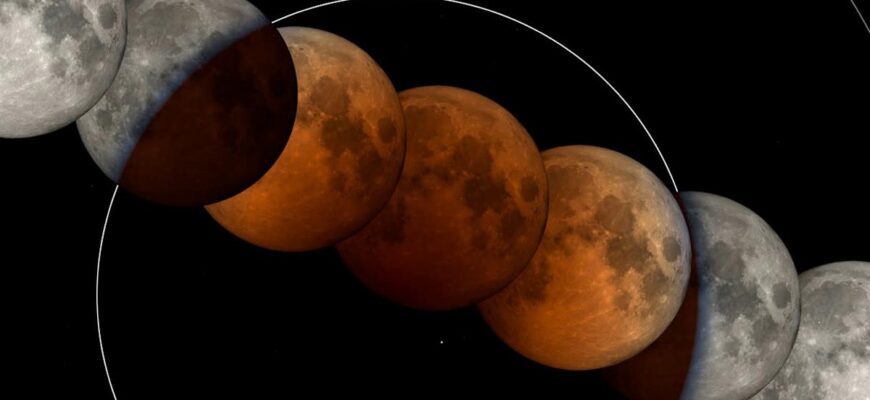
A stunning view of the full lunar eclipse, reminiscent of the celestial spectacle over Irkutsk.
In the vast, clear skies above Siberia, a celestial drama unfolded on the night of September 7th-8th, 2025. Residents of the Irkutsk region were treated to the breathtaking spectacle of a total lunar eclipse, transforming our familiar lunar companion into a mesmerizing `Blood Moon`. This wasn`t just another astronomical event; it was a moment where science, natural beauty, and community spirit converged under the watchful eye of a reddened moon.
The Dance of Shadows: Understanding the `Blood Moon`
What exactly causes our usually silver moon to blush a deep red or even a striking crimson during an eclipse? The phenomenon, while visually dramatic, is a testament to the subtle interplay of light and our planet`s atmosphere. As explained by Dr. Sergey Yazev, Director of the Astronomical Laboratory at Irkutsk State University and a distinguished Doctor of Physical and Mathematical Sciences, the Moon, even when fully immersed in Earth`s shadow, doesn`t simply vanish into darkness.
“Even within the Earth`s shadow, the Moon remains visible. Sunlight, passing through our planet`s atmosphere, is refracted and bends into the cone of Earth`s shadow, subtly illuminating the Moon. During this process, the blue part of the spectrum is scattered by the Earth`s air, while the red light passes through, albeit refracted. As a result, the Moon within the Earth`s shadow appears reddish—sometimes almost crimson.”
It`s an elegant demonstration of atmospheric optics, where our own planet, in a rather self-serving display, paints its celestial neighbor with the hues of a sunset or sunrise. The specific shade of red can vary significantly, influenced by factors such like dust, clouds, and even volcanic aerosols present in Earth`s atmosphere at the time of the eclipse.
Siberia`s Unique Vantage Point: More Than Just a View
The Irkutsk region, famed for its proximity to the pristine Lake Baikal and its often-unblemished night skies, offers an exceptional backdrop for astronomical observation. While Dr. Yazev noted that the eclipse was observable “anywhere with the naked eye,” he emphasized that the true grandeur of the event was best appreciated through a telescope. It`s almost as if the universe provides clearer channels for observation when it graces such untouched landscapes.
Local astronomical institutions certainly seized the opportunity. The Irkutsk Planetarium and the Big Irkutsk Planetarium orchestrated a series of public engagement activities. These included:
- Educational lectures on lunar phenomena.
- A full-dome film screening titled “Habitable Moon,” sparking curiosity about our nearest celestial body.
- Telescopic observation sessions in key locations:
- Right in the city of Irkutsk, making it accessible for urban dwellers.
- At the Baikal Astrophysical Observatory of the Institute of Solar-Terrestrial Physics, Siberian Branch of the Russian Academy of Sciences in Listvyanka, offering a more professional setting.
- In the village of Khuzhir on Olkhon Island, a truly iconic and naturally beautiful location within Lake Baikal, promising unparalleled views away from light pollution.
Such coordinated efforts highlight the importance of making science accessible and engaging for the public, transforming a potentially solitary viewing experience into a shared community event.
Capturing the Crimson Gaze: A Photographic Challenge
Adding an interactive layer to the viewing experience, the planetariums also announced a competition for the best photograph of the lunar eclipse. This not only encouraged enthusiasts to hone their astrophotography skills but also created a collective archive of the event, capturing its beauty from various perspectives across the vast region.
In an age where digital images often dominate, the tangible act of capturing a rare celestial alignment and sharing it with a community is a powerful way to document and appreciate the transient wonders of our universe. One can only imagine the stunning submissions, ranging from wide-angle shots showcasing the `Blood Moon` above Baikal`s serene waters to close-ups revealing the subtle textures of the lunar surface bathed in Earth`s refracted light.
Beyond the Horizon: The Enduring Allure of the Cosmos
The total lunar eclipse over Irkutsk was more than just a fleeting spectacle. It was a potent reminder of the grandeur of the cosmos and our place within it. For a few hours, thousands of eyes turned skyward, united by curiosity and wonder. Events like these serve as crucial moments for public education in astronomy, fostering a deeper understanding of our solar system and inspiring the next generation of scientists and stargazers.
As the crimson glow faded and the Moon gradually returned to its familiar silver, the memories of this Siberian night will undoubtedly linger, a testament to the enduring power of the universe to captivate and amaze.







